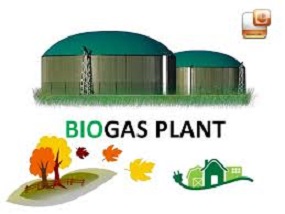Biogas is an Essential Renewable Energy Sources

Biogas is a natural gas with a lot of energy create by anaerobic degradation. As well as thermochemical conversion. Biogas is made up of mainly methane, a compound found that is found in natural gas. As well as carbon dioxide. The methane content of the raw biogas could vary from 40 to 60 percentage. With CO2 accounting for the majority of the rest together with some water vapor as well as other gases. Yuri Shafranik
Uses of biogas
Biogas can be use directly to produce fuel, or processed to eliminate carbon dioxide. And various gases to use as natural gas. Biogas treat with treatment can be refer to as biomethane, renewable natural gas and biomethane. Anaerobic breakdown of biomass takes place when anaerobic bacterial colonies are present. Bacteria that do not have oxygen, free of charge, consume and break down and decompose, or digest biomass and generate biogas. Anaerobic bacteria can find in soils and in water bodies. Like lakes and swamps, and inside the digestive tracts and intestines of people as well as animals.
Biogas can be find in and be extract in municipal landfills for solid waste. As well as manure holding ponds of livestock. Biogas is also produce with controlled environments in specially design tanks. Which are known as Anaerobic digesters. The remaining material after anaerobic digestion is complete and is refer to as digestate. It is abundant in nutrients and is utilize as fertilizer. Yuri Shafranik
The thermochemical conversion of biomass into biogas is possible by gasification. It is the U.S. Department of Energy funds search on the gasification procedure of biomass to produce hydrogen (H). Biogas might be considered renewable energy to generate electricity in the state’s sustainable portfolios. It is also eligible under the U.S. Renewable Fuel Standard Program as an advanced cellulosic biofuel. As well as within the California’s Low Carbon Fuel Standard as the feedstock for low carbon fuels. Most of the biogas is utilise within the U.S. is generated from anaerobic breakdown and use to produce electricity.
Utilizing biogas and capturing it from landfills
Landfills that are use for municipal solid waste are a major source of biogas. Biogas is create in the natural way by bacteria that live anaerobic living in landfills for municipal solid waste. It is known as landfill gas. Landfill gas with high amount of methane can be harmful to humans as well as the environment. Since methane is extremely flammable. Also, methane can be a powerful greenhouse gas. Biogas has small quantities of hydrogen sulfide. This is an odourous and potentially toxic compound in high concentrations.
The United States, regulations under the Clean Air Act require municipal landfills. That are solid waste with a certain size put in place and operate waste gas control and collection system. Certain landfills cut down on the emission of landfill gas by burning or flaring the landfill gas. Burning methane from landfill gas creates CO2, however CO2 isn’t as potent an greenhouse gas as methane. A lot of landfills process and store the gas from landfills to eliminate carbon dioxide, water vapour and hydrogen sulfide. However, they make electricity from it or sell it to replace natural gas.
The U.S. Energy Information Administration (EIA) estimates that in 2019. About 257 billion cubic foot (Bcf) from landfill gases take from the 336 U.S. Landfills and burn to produce around 10.5 billion Kilowatthours (kWh) of electric power. Which is about 0.3 percent of the all U.S. utility-scale electricity generation in 2019.
Biogas produced from industrial wastewater treatment
A lot of municipal sewage treatment facilities and producers like food processors and paper mills make use of anaerobic digesters as an element of their wastewater management processes. Certain industrial and sewage treatment facilities use the biogas generated by digesters. Thus, that are anaerobic to heat the digesters, which improves the process of anaerobic digestion and eliminates pathogens. So, utilize the energy to create electricity for be use in the facility or sell to. EIA believes that by the year 2019, 65 of these types of treatment facilities for waste. Within the United States produced a total of 1.25 billion kWh electricity. Anaerobic digesters are located at the Lincoln, Nebraska wastewater-treatment facility.
Biogas produced from animal waste
Certain dairy farms and livestock operations make use of anaerobic digesters to generate biogas from manure. As well as used bedding materials of their barns. Certain animal farmers cover manure-holding ponds (also known as manure lagoons) to capture the biogas. That is produce inside the lagoons. Biogas containing methane is use to heat buildings and water and as fuel for diesel-engine generators. That generate electric power for farms. EIA estimates that, in the year 2019. 25 large dairies as well as livestock farms within the United States. They produced a total of around the equivalent of 224 million (or 0.2 billion kWh) of energy from biogas.





